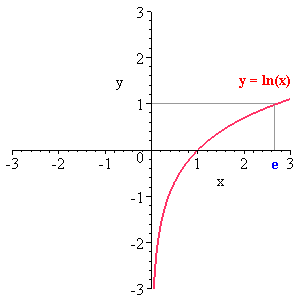
|
|
||
The natural logarithm, denoted as ln x, is the inverse of the exponential function exp x.
It actually comes up on its own in many contexts. It has two important properties, which can be deduced from the two fundamental properties of the exponent.
The definition of ln x can be phrased this way: it is the power that you must raise e to in order to get x: e^(ln x) = x = e ln x.
We often raise other numbers, in particular 2 and 10 to powers and can ask in general: what power must you raise z to in order to get x? The answer is called the logarithm of x to base z and is written as log z x. It is the inverse function to z^x = zx.
The two important properties alluded to above can be written as
ln ab = ln a + ln b
and
logab * logbc = logac for any a,b and c

Exercises:
2.13 Deduce them. (I must confess that I always get confused in doing so by poor notation, but I am sure you, being younger and smarter, can do it.) Solution
2.14 Deduce from these two equations that for log to any base we have log ab = log a + log b. Solution
The first property or rather the result in exercise 2.13 implies that we can
perform the multiplication ab by taking the logarithms of a and of b,
adding
them and then retrieving ab from its logarithm. Thus multiplication could
be reduced to addition and taking logarithms and "antilogarithms".
Before the advent of calculators, with which addition and multiplication are equally difficult, this was an important use for logarithms, and I recall as a high school student being forced to drill doing this with log tables and antilog tables and of course having to interpolate between values in those tables. It is hard to imagine anything mathematical more tedious than this, you lucky dogs!
|
|